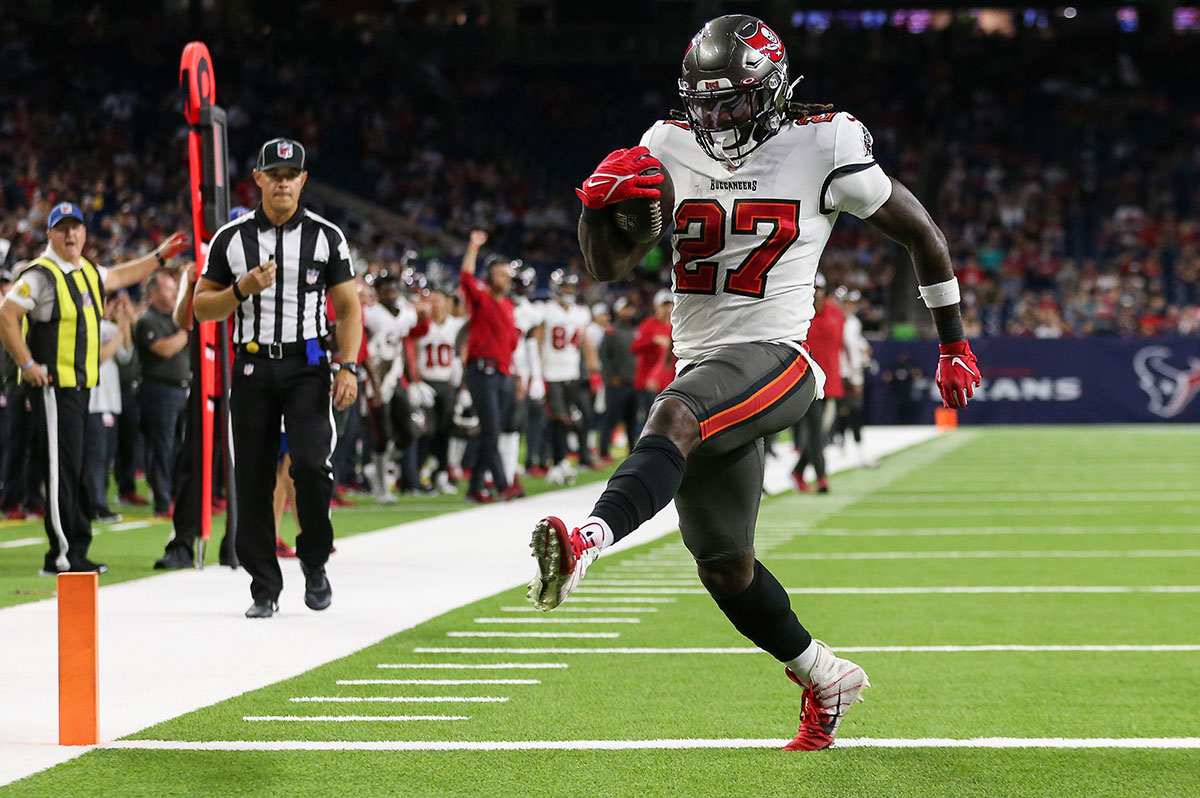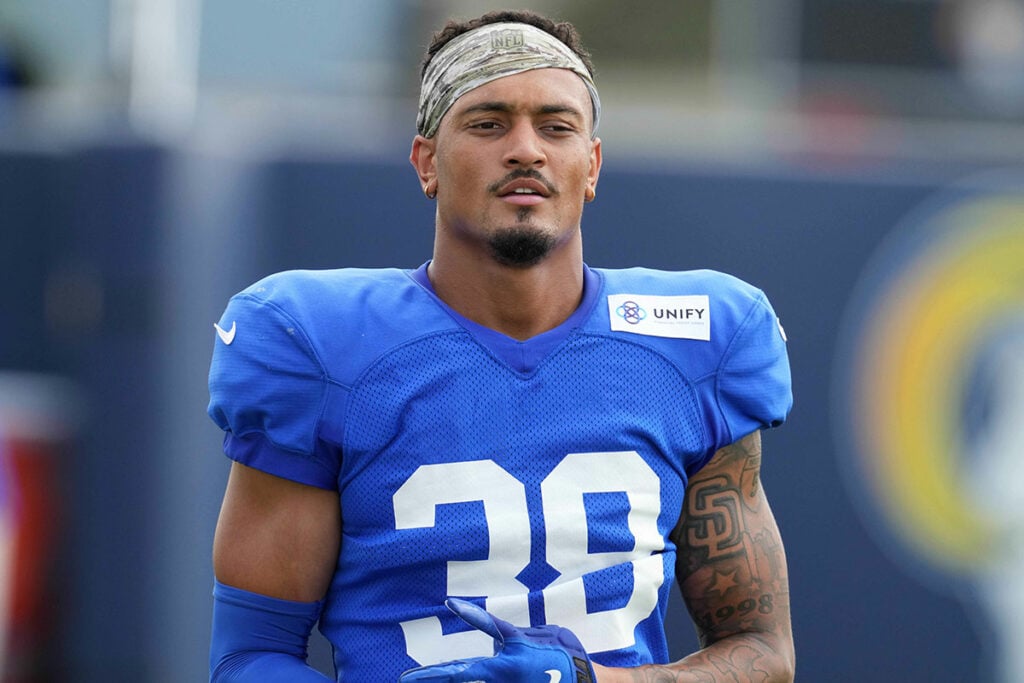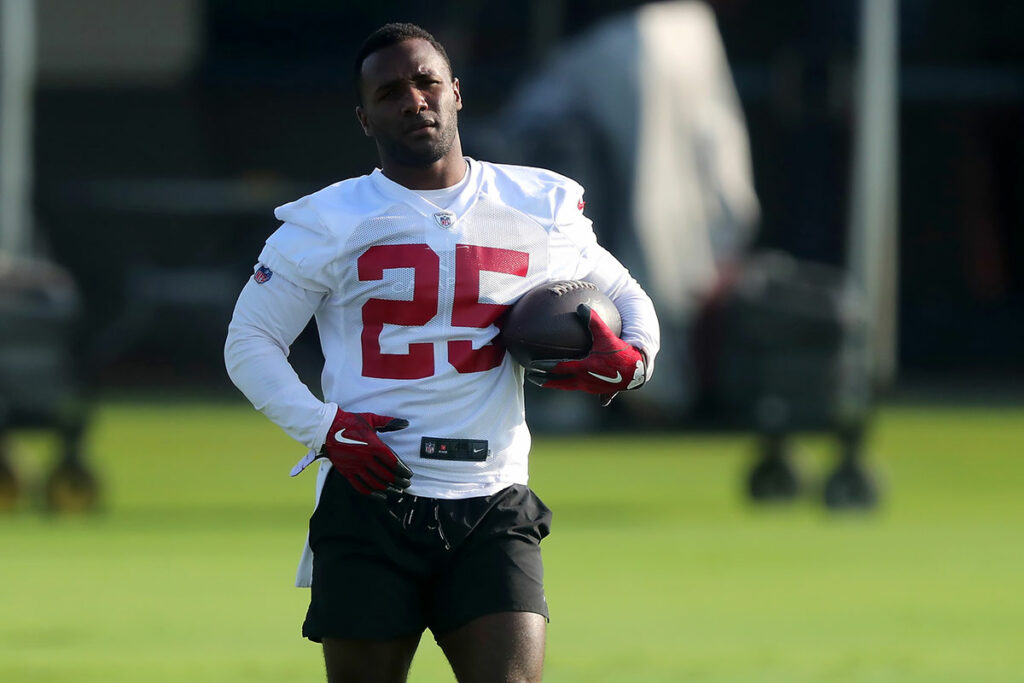The loaded Tampa Bay Buccaneers offense took the field last Saturday eager to show off its newfound intricacies. Chris Godwin shifted to the left. Rob Gronkowski shifted to the fullback position in an offset I-formation. Then Gronkowski shifted to a yard off right tackle Tristian Wirfs. Finally, Gronkowski shifted again to the backfield.
Things are happening!
“False start – 81 offense. Five-yard penalty. First down.”
Following the penalty, Texans linebacker Kamu Grugier-Hill exploded into the backfield, unimpeded, to take down Ronald Jones for a loss of three. Tom Brady hit an NFL staffer on the sideline on a second-and-18 pass intended for a wide open Antonio Brown. The miss came off of Hoss Juke, no less – a play Brady executed countless times during his 20 years in New England.
On third-and-18, Byron Leftwich settled for a field position play by calling a screen for newly added and sure-handed running back Giovani Bernard. Yet, the ball went right through his hands.
Fourth-and-18. Punt.
Undisciplined and unfocused.
Is this the Chicago game all over again?
Not even close. As if Skynet had just gone online, Tampa Bay’s first-team offense returned to the field with machine-like precision.
The second and third drives were not only sharp, they were executed at a level unseen over a 2020 season that culminated in a Super Bowl victory. For instance, the entire second drive was run out of no-huddle – something the Bucs almost never did unless they absolutely had to in 2020.
During an up-tempo drive in Week 12 of last season, Brady lugged himself over to a shoulder-shrugging Brown, who was even less acclimated with the system than Brady, to tell the receiver what his route was. On the second offensive drive last Saturday, Brady commanded the offense, shouting key words and waving hand signals to adjust routes in lieu of a huddle. All 11 players were certain of their assignments.
The third possession used a normal pace. The level of execution remained unchanged, as it ended in a high stepping Jones galloping into the end zone.
Interestingly, but not surprisingly, all three drives from the starters featured the same core concepts the Bucs offense relied on last year. This was not a reinvention. Instead, it was high-level execution by a group of players far more familiar with each other than they were in New Orleans last September.
Let’s explore exactly how these two drives came to be.
Offensive Series Two
1 – First-and-10.
Tampa Bay used 11 personnel (one running back, one tight end, three wide receivers) for the entirety of the second drive. Leonard Fournette motioned from the backfield to out wide on the weak side. Because a cornerback followed him, as opposed to a linebacker, Brady knew that the Texans were likely playing zone. Further, given the single-high safety, the defense was likely to be in a Cover 3 variant.
On the strong side, the Bucs had Brown at No. 1 (the receiver closest to the sideline), Gronkowski at No. 2 (the receiver second closest to the sideline), and Godwin at No. 3 (the receiver third closest to the sideline).
The strong side passing concept was akin to the old school West Coast “Hank” concept. The difference on this play was that, instead of having the No. 1 run a curl and the No. 2 run a flat, the No. 2 ran the curl, and the No. 1 stayed pat. This effectively put the No. 1 where the No. 2 would usually end up on the flat route.
After the snap, the outside corners on each side “bailed” to their deep thirds. This left Brown open for an easy gain.
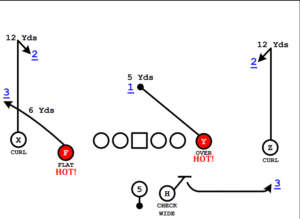
2 – Second-and-2.
The Bucs lined up in a 3×1 formation and isolated Mike Evans on the backside. Bruce Arians has loved isolating Evans like this since arriving in Tampa Bay. If the quarterback likes the match-up with Evans, he can take the easy win. Otherwise, he will work the strong side concept.
On this play, Byron Leftwich called a choice route to the three receiver side — something Arians and Leftwich do far more than most coaches. Typically, offensive coaches prefer using choice routes on the weak side as there’s less space occupied by the other route(s).
Seeing the single-high alignment, Brady knew that the Texans were likely playing Cover 3 again. This meant Evans could be left one-on-one on any vertical or out-breaking routes. Further, if the corner played soft again, Evans’ curl route would be made even easier to complete. And that’s exactly what happened.
3 – First-and-10.
The offense stayed in 3×1 with Evans isolated. The Texans, again, showed a single-high look. This is one of the advantages to playing up-tempo – defenses tend to stay in “vanilla” coverages.
The strong side concept called here was “Tier” in Arians’ language. Many call this “Double China.” Tier, a simple inside out read, is one of Arians’ most frequent calls.
On the backside, Evans ran an out route past the first down marker. Again, Brady looked this way to the one-on-one match-up and delivered a strike.
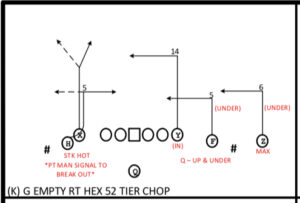
4 – First-and-10.
The Bucs continued to operate out of 3×1 with Evans isolated. The Texans, however, finally changed their coverage shell to two-high.
Leftwich dialed up Four Verticals against Houston’s Tampa 2 coverage. In Tampa 2, the Mike linebacker, or No. 58 Christian Kirksey for the Texans, has to carry any inside vertical routes up the field. This created a conflict as both Gronkowski and Godwin had vertical routes from the inside.
Brady and Godwin both spotted the gap in coverage between the second and third level, and that’s exactly where Godwin slowed his route down and where Brady delivered the ball. With the safeties gaining so much depth down the field, they became non-factors in the seam.
5 – First-and-10.
For the first time in the possession, the Bucs lined up in a 2×2 formation. The Texans reverted to their single-high zone look.
Leftwich called Double Seams. The No. 1 receiver on each side ran a stop route while the No. 2’s attacked the seams. Fournette started in the backfield before finding a soft spot underneath on an option route.
Typically, this passing concept is favorable against Cover 3. The quarterback can use his eyes to hold the middle field safety before ripping the seam throw. It’s unclear why Brady settled for the check-down so quickly instead of working seam-to-stop-to-checkdown. This appears to be a missed opportunity.
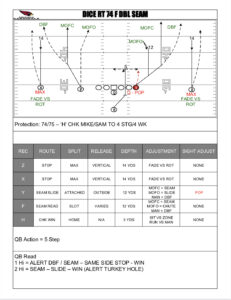
6 – Second-and-7.
The offense went back to 3×1, this time with Scotty Miller isolated on the backside. While the Texans continued to play a single-high zone, they sent a fifth pass rusher for the first time all series. Nickel corner Desmond King II came in on a “cat blitz.”
The Bucs went back to their Tier concept. It’s interesting that the Texans had their strong safety come from depth and match routes going under instead of having him start closer to the curl/hook area. This allowed Brown to get wide open on his under route in the area vacated by the blitzing corner.
7 – First-and-10.
The Bucs returned to 2×2 and the Texans countered by showing a two-high look. However, as the ball was snapped, Texans’safety Justin Reid spun down and shifted the defense to single-high.
After a possible missed opportunity last time, the Bucs, again, called Double Seams. Godwin, from his No. 2 spot, jab-stepped outside before releasing inside up the field to where Reid had rotated down from. Brady saw the rotation and Godwin’s win off the line of scrimmage, and delivered an in-rhythm pass for the touchdown.
Offensive Series Three
1 – First-and-10.
The Buccaneers called Go, their bread-and-butter pass play – this time off of play action. With the would-be hole player in Cover 1 man blitzing for the Texans, Godwin easily came open against his one-on-one match-up on the delta route.
2 – First-and-10.
After playing the entire previous series out of 11, the Bucs returned to 12 personnel (one running back, two tight ends, two wide receivers).
Further, after 10 consecutive pass attempts, Leftwich called split zone to take advantage of Jones’ burst. With the offensive line flowing left, O.J. Howard came across the formation, left to right, to seal the edge. Jones cut back towards the right and exploded through the hole, undeterred by Texans’ defensive lineman Vincent Taylor desperately clinging on to Jones’ undershirt.
3 – First-and-10.
While this might surprise some, the Bucs call quite a few RPOs. They’re not the same as the RPOs in which the quarterback pulls the ball from the running back’s belly after a delayed post-snap read; however, they are technically run-pass options.
The Buccaneers offensive line was run blocking, but Brady identified the off coverage outside and delivered a quick, accurate, and leading strike to Brown. Godwin showed off his excellent run blocking skills and helped convert what would have been a five or six yard gain into a first down.
4 – First-and-10.
The Texans went back to their Cover 1 man blitz.
Off play action, the Bucs had a hitch/seam (Hoss) combination on one side with two stop routes on the other. Brown, the No. 1 on the stop side, showed off his incredible agility and route running as he stopped on a dime and caught the high pass. With how talented the Bucs are at receiver, playing Cover 1 will be a huge challenge for defenses.
5 – First-and-10.
The Buccaneers switched to 10 personnel (one running back, zero tight ends, four wide receivers) and prompted the Texans to play a two-high zone coverage.
Tampa Bay only had four runs from 10 personnel through the 2020 regular season. They may consider using lighter personnel for their runs more frequently to help create lighter boxes. The Bucs often use heavy personnel with tight ends in the wing position and a wide receiver close to the offensive line. While this provides them with additional run support, it also signals a run to the defense, who can respond by loading the box.
6 – Second-and-3.
With the Bucs in 12 personnel with two tight ends attached to the line, Houston crowded the line of scrimmage and switched to a single-high look. The Bucs, again, had an RPO called, and Brady tried to hit Evans on the slant route.
7 – Third-and-3.
The Bucs stayed in 12 personnel and the Texans stayed in a single-high zone defense. One play Arians loves is “Okie.” Okie is run from tight receiver splits with one receiver running a corner route and the other running a quick out route.
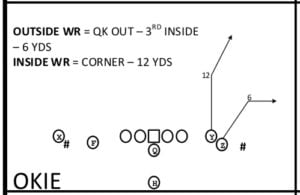
On third-and-7, the Buccaneers called a play that’s a direct counter to Okie on both sides of the formation. Gronkowski and Evans, the would-be corner route players on each side, faked a corner route before cutting inwards on a post. Meanwhile, Howard and Godwin, who would have run out routes on Okie, began their routes outwards before cutting back inside.
The vertical stem from Gronkowski pushed the defense and created enough space underneath for Howard to pick up the first down.
This play was only used a few times in 2020, but one of those instances resulted in a dime from Brady for a touchdown to Brown. Brady began his read to the left, then glanced right to move the post safety, and came back to the left with just enough space to fit the tight window throw to Brown.
— All-22 Clips (@tapetwentytwo) September 1, 2021
8 – First-and-10.
The Buccaneers indicated run with their formation and personnel (12). The Texans fit the interior run gaps well, but Jones made a decisive read and quickly cut outside. His speed and vision turned a potential negative play into a touchdown.
Looking Forward
The Buccaneers offense is positioned to be amongst the best in the league. While Houston isn’t a great barometer to test Tampa Bay, the offense looked as dominant as it should have.
Arians and Leftwich relied on their staple play calls. However, there was still information to be gleaned.
Over the three drives played by the starters, the Bucs lined up in 11 personnel 68 percent of the time. In 2020 (including the playoffs), Tampa Bay used 11 personnel on 56 percent of their plays. Because the Buccaneers should have Brown for the entire season, their 11 personnel usage rate will likely be higher in 2021.
Furthermore, the Bucs used some form of motions and/or shifts on 51 percent of their plays in 2020. Over the first three Week 3 preseason drives, they motioned and/or shifted on 63 percent of plays. This number is suppressed by the second series in which Tampa Bay played up-tempo and, consequently, only used motion on the first play of that drive. Removing the second possession altogether increases their motion and/or shift rate to 92 percent (all but one play).
The Buccaneers offense doesn’t need to reinvent the wheel to be excellent in 2021. Regardless, against the Texans, they rolled up with fresh rubber and shiny rims. If this cohesion carries over to the real games, there’s no telling how high the ceiling is for Tampa Bay’s offense.

